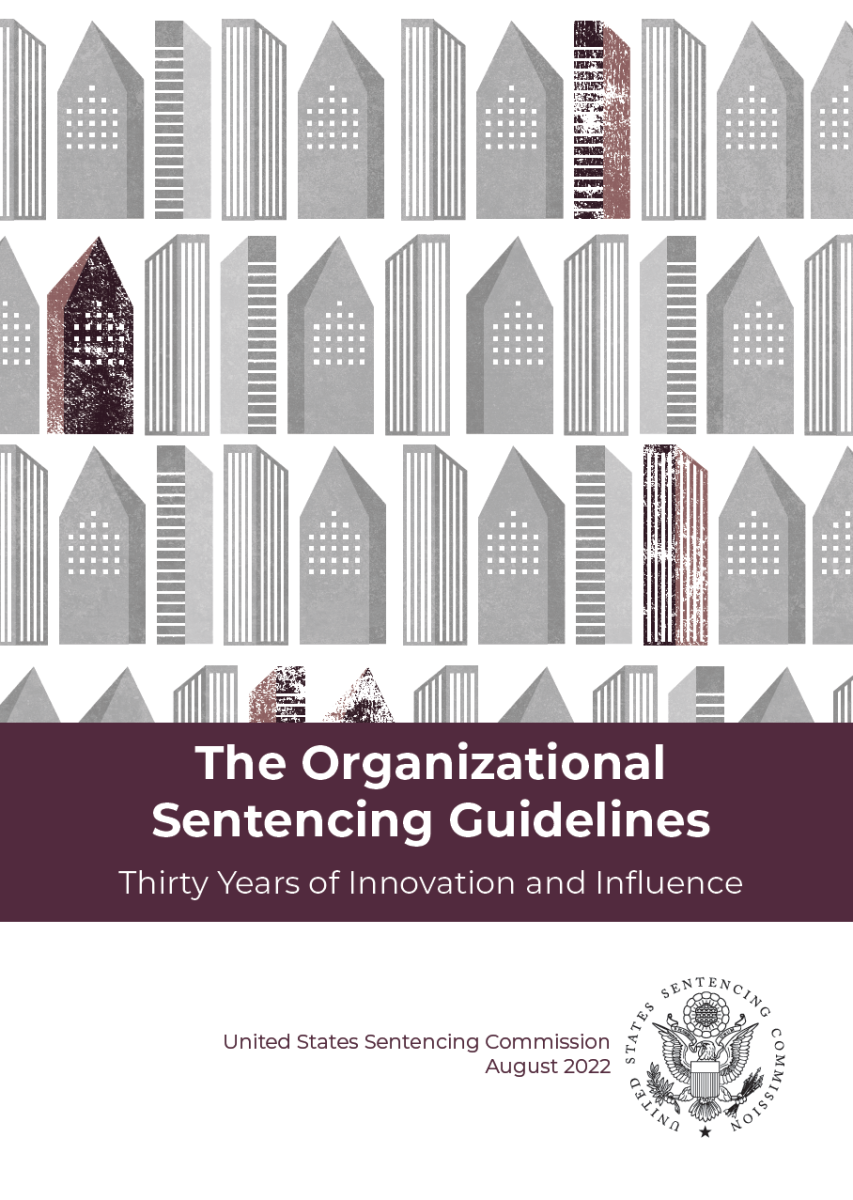Summary
(Published August 29, 2022) This publication summarizes the history of Chapter Eight’s development and discusses the two substantive changes made to the elements of an effective compliance and ethics program. It then provides policymakers and researchers a snapshot of corporate sentencing over the last 30 years. Finally, the publication describes Chapter Eight’s impact beyond federal sentencing.
Key Findings
-
The major innovations of the organizational guidelines are (1) incentivizing organizations to self-police their behavior; (2) providing guidance on effective compliance and ethics programs that organizations can implement to demonstrate efforts to self-police; and (3) holding organizations accountable based on specific factors of culpability.
-
The most significant achievement of Chapter Eight has been the widespread acceptance of the organizational guidelines' criteria for developing and maintaining effective compliance and ethics programs to prevent, detect, and report criminal conduct.
-
During the 30-year period since promulgation of the organizational guidelines, 4,946 organizational offenders have been sentenced in the 94 federal judicial districts. The majority of organizational offenders are domestic (88.1%), private (92.2%), and smaller organizations with fewer than 50 employees (70.4%).
-
Six offense types accounted for 80.4 percent of all organizational offenders from fiscal years 1992 through 2021.
-
Fraud (30.1%) and environmental (24.0%) offenses, accounted for more than half (54.1%) of all organizational offenses.
-
Other common offense types were antitrust (8.4%), food and drug (6.6%), money laundering (6.1%), and import and export crimes (5.2%).
-
-
Commission data suggests that the lack of an effective compliance and ethics program may be a contributing factor to criminal prosecutions against organizations.
-
Since fiscal year 1992, the overwhelming majority of organizational offenders (89.6%) did not have any compliance and ethics program.
-
Only 11 of the 4,946 organizational offenders sentenced since fiscal year 1992 received a culpability score reduction for having an effective compliance and ethics program.
-
More than half (58.3%) of the organizational offenders sentenced under the fine guidelines received a culpability score increase for the involvement in or tolerance of criminal activity.
-
Few organizational offenders (1.5% overall) received the five-point culpability score reduction for disclosing the offense to appropriate authorities prior to a government investigation in addition to their full cooperation and acceptance of responsibility.
-
Since fiscal year 2000, courts ordered one-fifth (19.5%) of organizational offenders to implement an effective compliance and ethics program.
-
-
Since fiscal year 1992, the courts have imposed nearly $33 billion in fines on organizational offenders. The average fine imposed was over $9 million and the median amount was $100,000.
-
Since fiscal year 1992, courts sentenced over two-thirds of organizational offenders (69.1%) to a term of probation and the average length of the term of probation imposed was 39 months.


